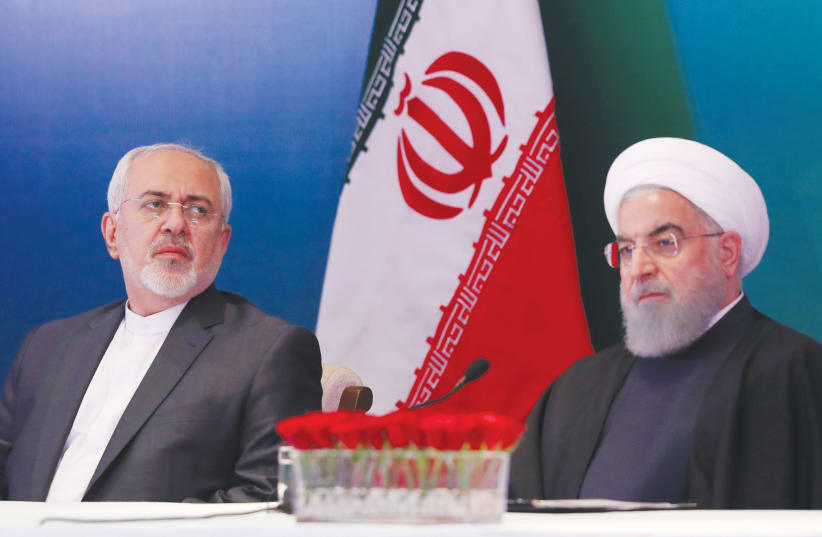In a Monday night interview with CNN, Zarif made his latest shift.
After demanding that the US first return to the nuclear deal, end sanctions and pay the Islamic Republic compensation for sanctions before he would commit to ending nuclear violations, Zarif made it clear that he would drop that requirement.
Zarif discussed the 2015 nuclear deal coordinator advertising a sequencing of reciprocal moves by both sides to return to compliance over time.
Maybe even more significantly, Zarif suggested for the second time that Tehran would be open to withdrawing its involvement in Yemen in exchange for an end to Saudi Arabian and US involvement there.
Although this has come up before, usually the Saudis have been offering this and Iran has made vague statements, trying to avoid any commitments to America about its aggression in the Middle East.
However, after hearing repeated statements from US Secretary of State Antony Blinken, including this week and last week, as well as by US National Security Advisor Jake Sullivan on Friday and other statements, the Islamic Republic may be realizing that, whether as part of the 2015 deal or a follow-on deal, it will not be able to act with a free hand in the region as it did after the deal during the Obama administration.
Before US President Joe Biden took office, Tehran made threats about a major escalation if there was no deal by February 2.
February 2 has now come and gone.
Their next “deadline” is February 21, when their parliament has obligated to kick out IAEA inspectors if the US has not thrown in the towel.
But Zarif and other Iranian officials have already muddied the waters about that threat, saying either it is not binding, that maybe they would only make a small symbolic reduction in IAEA cooperation while keeping most inspections in place, or that they might make some sort of technical opt out of certain cooperation, but keeping it going on the ground based on multiple nuclear obligations they have beyond the 2015 deal.
The US, for its part, seems certain not to make any major concessions, or not to implement the concessions even if some principles are agreed to, before the March 23 Israeli election, when it will have a better idea about who they are dealing with in Jerusalem.
The real interim deadline for at least agreeing to a process for both Tehran and Washington to start returning to the deal is more likely the Iranian elections in June.
Even that date likely will only be interim, since the US probably will not remove all sanctions before it knows who it will be dealing with in Tehran post-elections.
One other issue to keep an eye on is Zarif’s repeated attempts, including in a recent article and again with CNN on Monday, to separate Yemen, and possibly even some concessions in Iraq, from the Lebanon-Syria-Israel front.
The Islamic Republic may be more willing to tone down some activities in Yemen and even Iraq than with this triangle.
What is clear is that Zarif is desperate to break apart the Israel-Saudi alliance. And it is unclear whether the US and the Saudis will let him do so.
But in the meantime, there has been some success in calling Iran’s bluffs.
